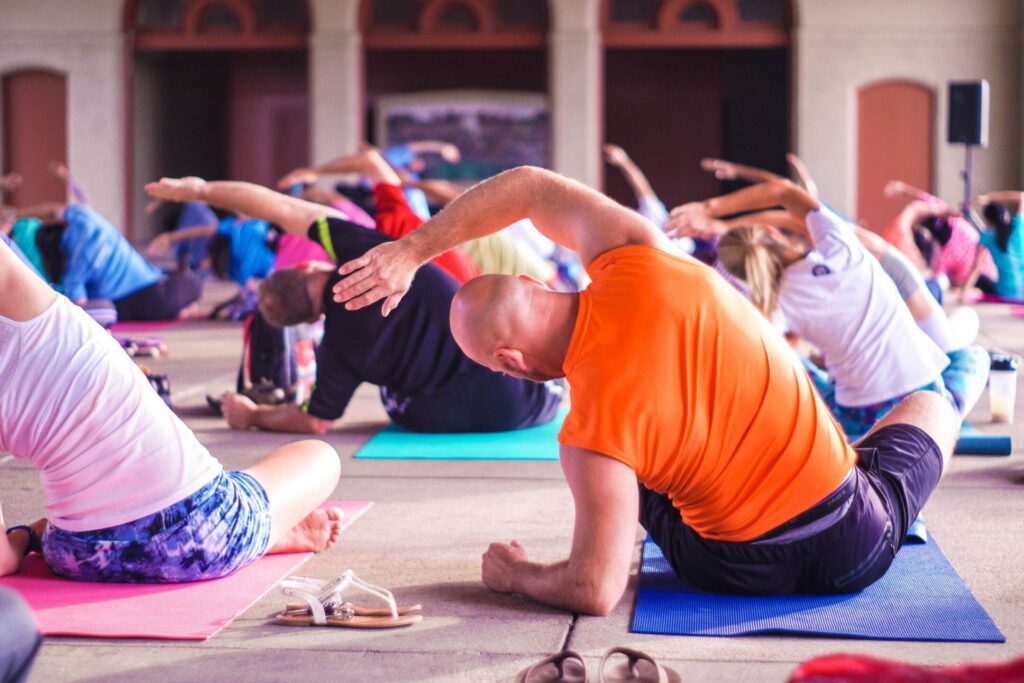Aloha yogis!
I wanted to share with you some information on a topic in the yoga world that does not garner much attention, but it is always nice to have as a reference point to guide and support you on your journey into yoga! Especially if you are completely new to yoga, class offerings through a studio can be daunting. Some studios might offer a “Beginner’s Yoga Class” or “Foundations of Vinyasa Flow” for the novice to help ease the transition into all things yoga. And typically, how it goes down is that after the student feels comfortable with taking these types of classes, he/she will organically transition from a beginner’s class to an intermediate yoga flow class.
Truth be told, from my perspective, descriptors such as intermediate yoga poses, intermediate yoga sequences, and intermediate yoga positions are terms that are suggestive of most classes in the yoga world. On one side you have beginner’s yoga, and on the other side, you have advanced yoga, and everything in-between is intermediate yoga. After you learn the basics, as in a “beginner’s yoga class”, virtually every other class is intermediate. Once in a while, you may encounter an advanced class, which pretty much connotates contortions and therefore would alienate most of the students in the class. I would venture to say that any class being described as intermediate yoga flow is essentially a physical class that can be vigorous using fairly approachable asanas. These intermediate yoga sequences can range anywhere from 60-to 90-minutes. Feel free to experience one of my intermediate yoga videos for free to get a better sense of my philosophy!
To further our effort in guiding you along the physical asana path, I would describe all of the classes that we teach as intermediate, as we want to be inclusive and not exclusive. So, approachable poses are selected that can be modified for the beginner or physically limited (regardless of whether it is due to an injury, preexisting physical condition, pregnancy, etc.), and can be explored more deeply by the student who wishes to up-level a particular pose (aka, intermediate yoga poses).
Basically, everyone should take these poses to a personal degree, and the real difference between beginner, intermediate, and advanced is the student’s ability and/or sensitivity to discern where they belong in the pose according to their unique experience. The better you as the student becomes in the art of discernment, the more the yoga becomes healing. Why? Because you are working on an intimate level with what you are feeling—this is, in part, why you have been given feelings, to guide you!
Intermediate could also be indicative of the middle path or “moderation” –not too much and not too little. As it applies to the asana practice, the poses are challenging but accessible. This is actually the place I would like to see all of us find–the middle place. What I mean is regardless of the class or the pose, I need to discern for myself someplace in-between too much and too little. Where I’m stimulating but not irritating. I like to call this “meeting the razor’s edge” or moderation. This moderate place in each pose is constantly changing as we are constantly changing, so the mind needs to get really quiet (free of distractions) to find that moderate place somewhere between too much and not enough. Then, you have a MATURE yoga practice, which is a label we like much better than intermediate.
If you are interested in learning more about the various levels of yoga, Power Yoga offers a selection of Beginner, Intermediate, and Advanced Yoga Videos for you to experience at no charge! Our hope is that your experience on the mat (and perhaps something gleaned from our perspective based on over 35 years of experience!) will continue to inform your practice and guide you along the path.
May you flow in love and peace,
– BK


2 thoughts on “What is Intermediate Yoga?”
Moderate and mature. That sounds good to me. Thank you Bryan. Still subscribing and still loving all those practices!
Right on brother!